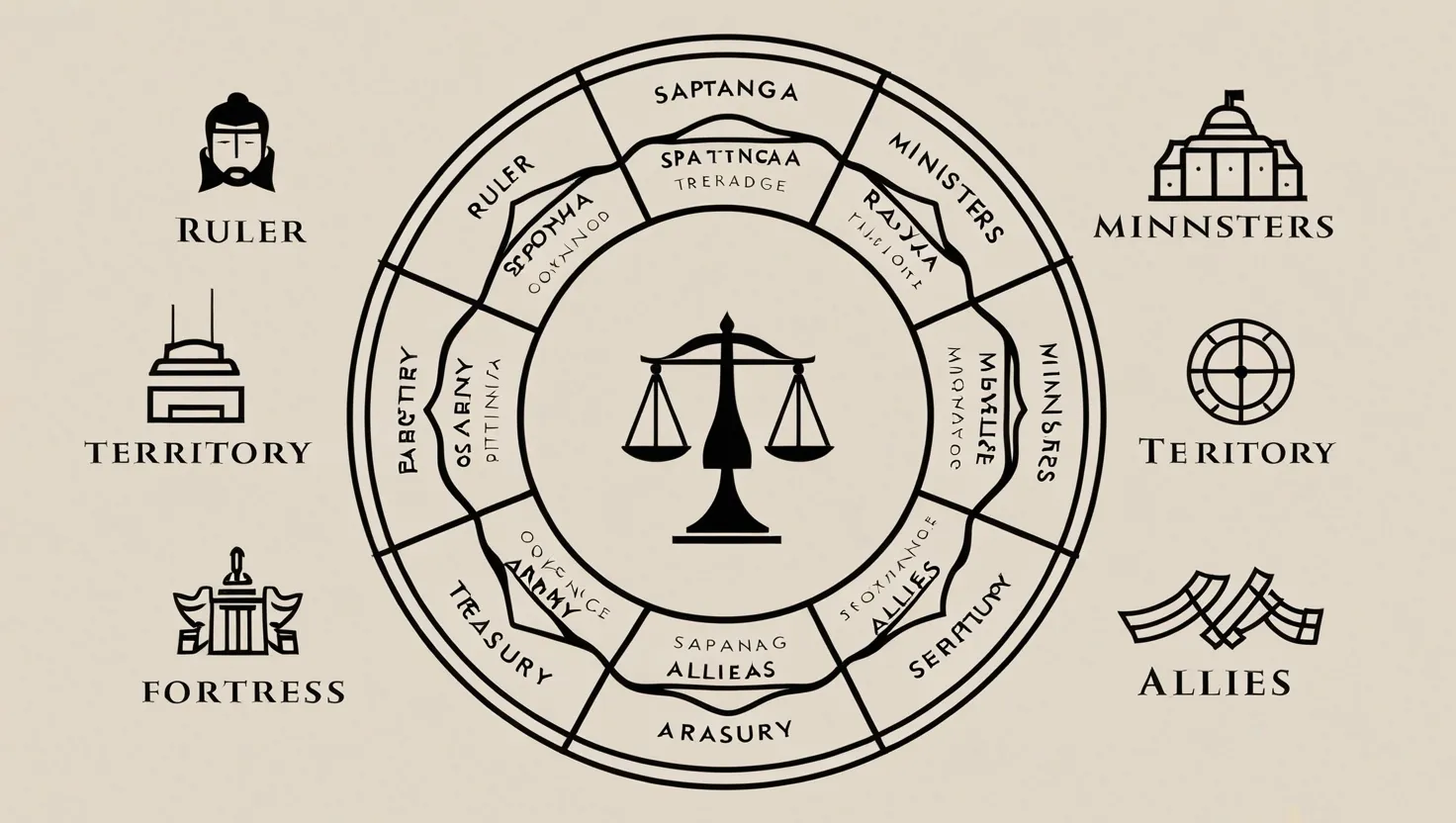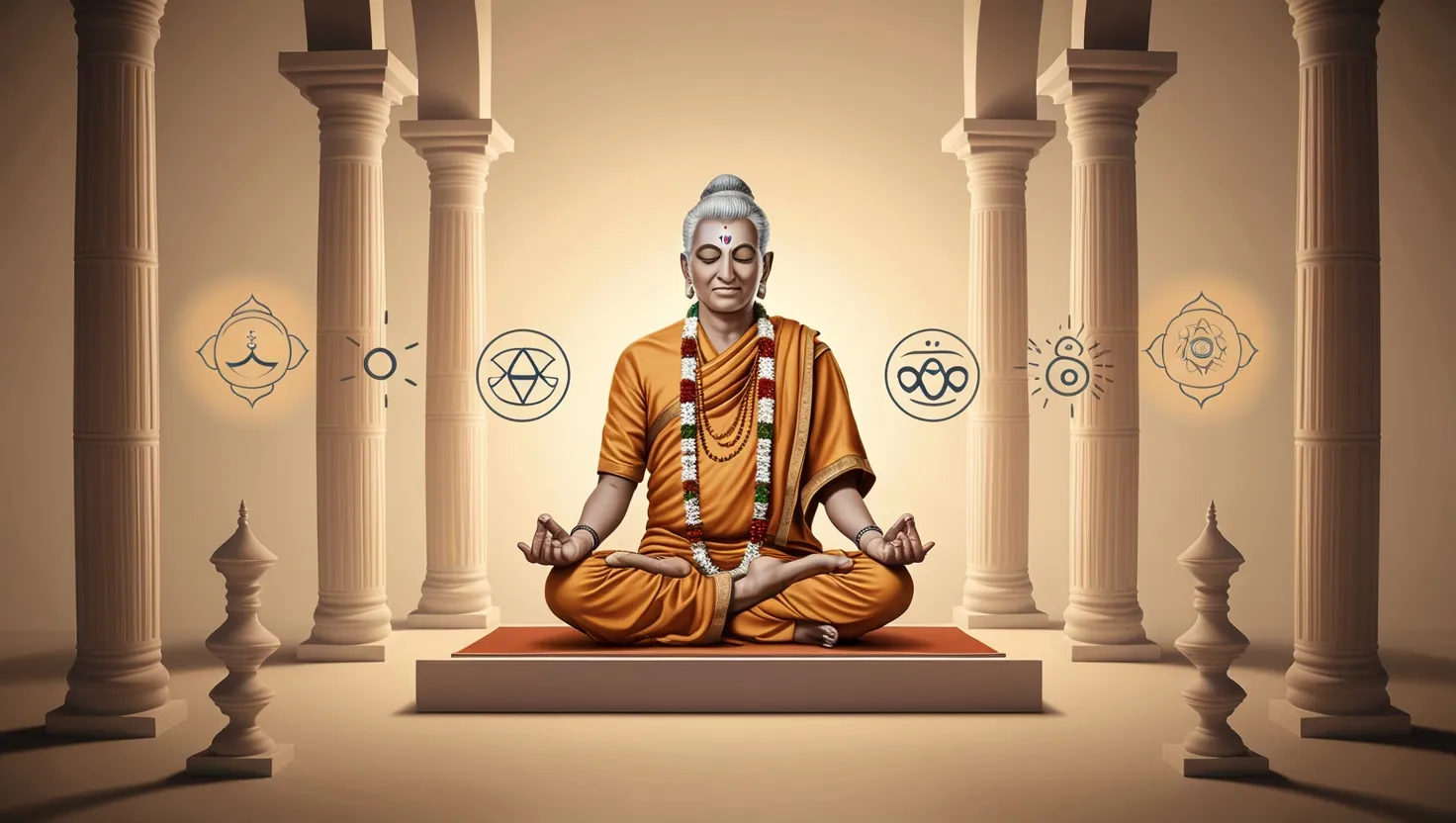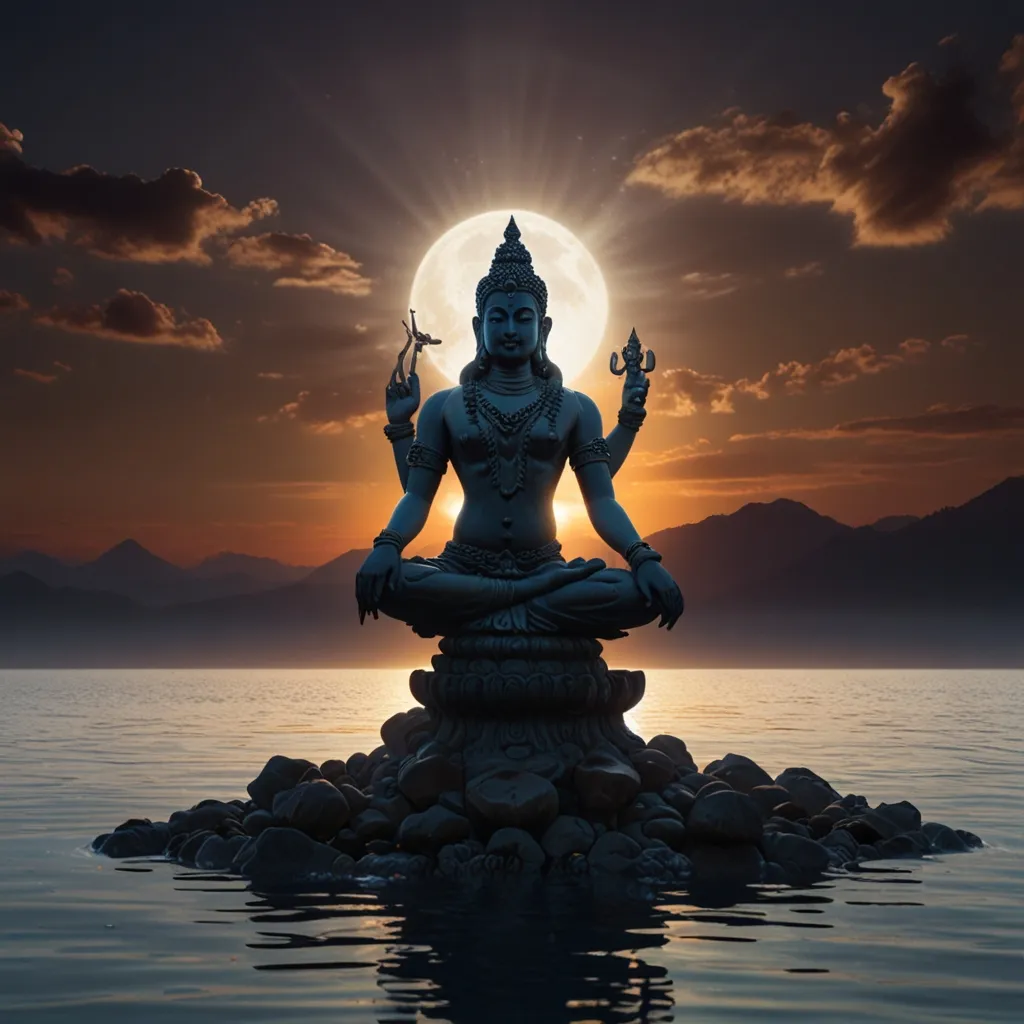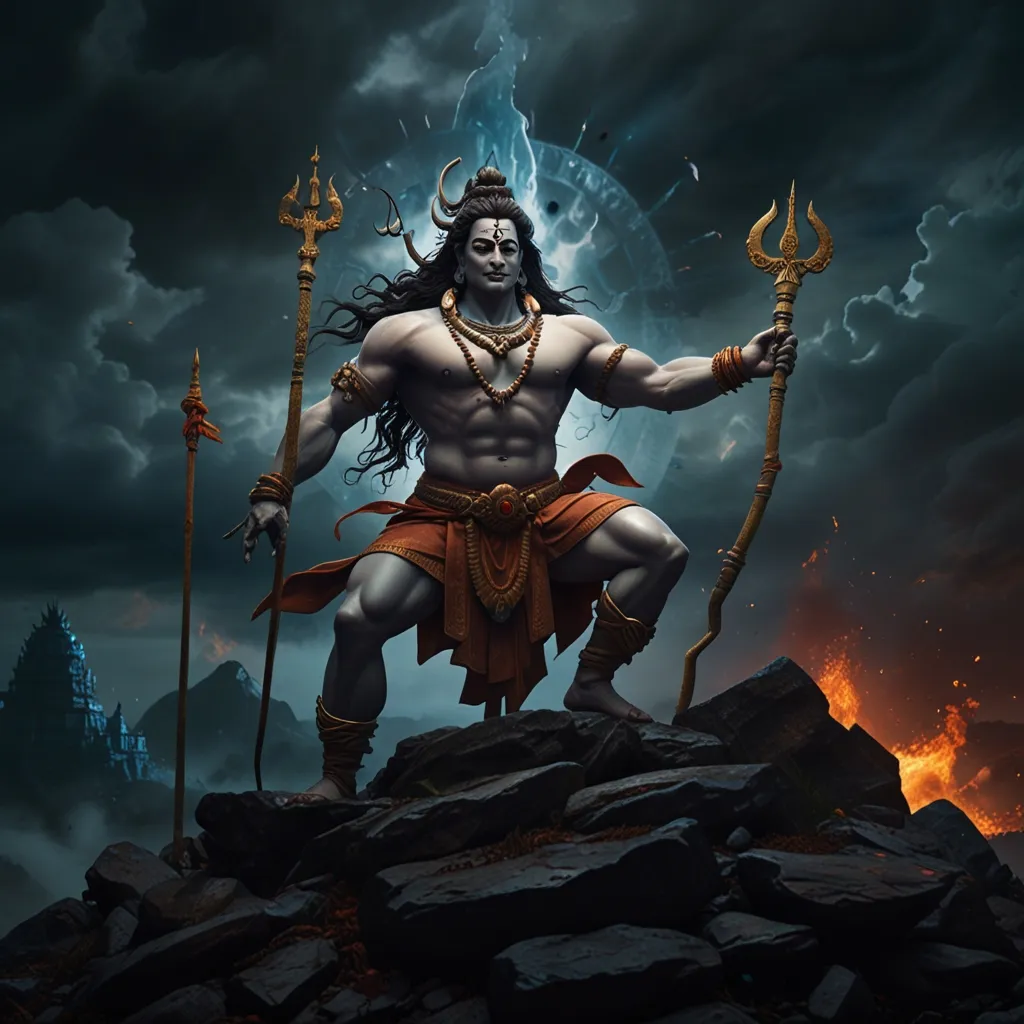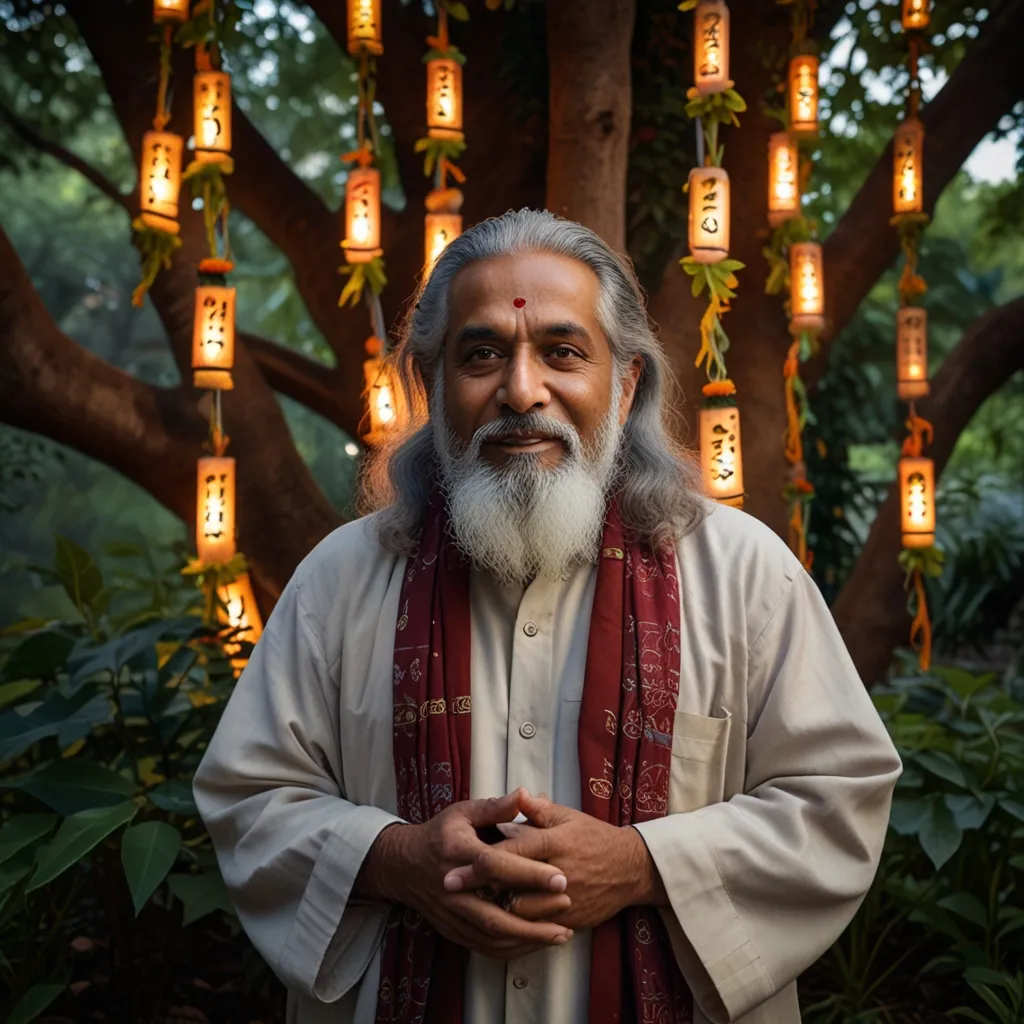As we delve into the rich tapestry of ancient Hindu statecraft, a fascinating concept emerges that offers profound insights into the art of governance and leadership: the Saptanga Rajya, or the seven-limbed body of the state. This holistic approach to ruling, rooted in the seminal text of the Arthashastra and echoed in various Hindu epics, breaks down the complex entity of a kingdom into seven essential elements. Each of these elements, much like the limbs of a human body, plays a vital role in maintaining the balance, prosperity, and harmony of the state.
At the heart of the Saptanga Rajya is the ruler, or Swami. This monarch is not just a figurehead but the very backbone of the state. According to ancient Hindu thinkers, the Swami should be a native of the land, born into a noble family, and endowed with bravery, wisdom, and virtue. The ruler’s primary duty is to ensure the welfare and happiness of his subjects, a task that is both a moral obligation and a key to his own happiness. This emphasis on the ruler’s character and responsibilities underscores the importance of ethical leadership in ancient Hindu statecraft.
The second limb of the Saptanga Rajya is the Amatya, or the council of ministers. These ministers are the ruler’s right-hand men, responsible for advising him, collecting taxes, developing new villages and cities, and ensuring the defense of the state. The Amatya is more than just an administrative body; it represents the intellectual power and counsel that guide the ruler’s decisions. The selection of ministers is a critical task, with criteria such as tradition, ability, examination, fulfillment of objectives, and test of courage being essential for their appointment.
The Janapada, or the territory and population, forms the third limb of the state. This element encompasses not just the physical land but also the people who inhabit it. The territory should be fertile, rich in natural resources, and demarcated by natural features like rivers, mountains, or forests. The population, on the other hand, should be loyal, hardworking, disciplined, and ready to defend their motherland. The Janapada is the lifeblood of the state, providing the economic and human resources necessary for its survival and prosperity.
The Durga, or the fortified city, is the fourth limb and a crucial element in the state’s defense strategy. Ancient Indian scholars recognized the importance of constructing forts at strategic locations to ensure the security of the Janapada. These forts were not just physical barriers but also symbols of the state’s power and resilience. The Durga was often guarded by various forest tribes and was classified into different types based on their location and defensive capabilities.
The Kosha, or the treasury, is the fifth limb and represents the economic power of the state. A robust treasury is essential for funding various state activities, including the maintenance of the army, the construction of public works, and the provision of social welfare. The Kosha is not just a repository of wealth but also a measure of the state’s financial health and stability.
The Danda, or the army, is the sixth limb and a pivotal organ for the state’s existence and security. A powerful army is necessary not only for defense but also for offensive strategies, particularly in an era marked by frequent conflicts between small and medium-sized states. The army consisted primarily of Kshatriyas, though individuals from other castes were also allowed to join. Soldiers were expected to be valiant, skilled in warfare, and loyal to the ruler.
The final limb of the Saptanga Rajya is the Mitra, or the ally. This element highlights the importance of diplomatic relations and external alliances in enhancing the state’s power and influence. The Mitra is not just a passive supporter but an active partner that can provide significant support in times of need. This emphasis on alliances underscores the interconnected nature of states and the need for cooperation in achieving common goals.
One of the most compelling aspects of the Saptanga Rajya is its holistic approach to governance. Each limb is interconnected, and the success of one depends on the well-being of the others. For instance, a strong and virtuous ruler (Swami) selects capable ministers (Amatya), who in turn ensure the prosperity of the territory and population (Janapada). This prosperity then strengthens the state’s treasury (Kosha), which in turn supports a well-trained army (Danda), enhancing the state’s bargaining power and its ability to form meaningful alliances (Mitra).
This ancient wisdom also tackles issues that are still relevant today, such as resource management and social harmony. The Saptanga Rajya emphasizes the importance of economic productivity, defensible territories, and a contented population. It also highlights the need for effective statecraft, where the ruler and his ministers work in tandem to maintain peace, enforce laws, and ensure the observance of social duties (dharma).
In exploring the Saptanga Rajya, we gain fresh perspectives on leadership and governance. This concept reminds us that ruling is not just about wielding power but about ensuring the well-being of all subjects. It is a call to leaders to be virtuous, wise, and just, and to recognize that their happiness is inextricably linked to the happiness of their people.
As we navigate the complexities of modern governance, the Saptanga Rajya offers timeless principles that are as relevant today as they were in ancient times. It teaches us the importance of balance, harmony, and the interconnectedness of all elements of the state. Whether you are a historian, a political scientist, or simply someone curious about different approaches to governance, the Saptanga Rajya is a treasure trove of wisdom that promises to shed new light on the art of ruling wisely.
In conclusion, the Saptanga Rajya is more than just a theoretical framework; it is a living, breathing philosophy of governance that has stood the test of time. As we reflect on its seven limbs, we are reminded of the enduring importance of ethical leadership, wise counsel, economic stability, defensive strength, and diplomatic alliances. This ancient wisdom is a whisper of the past, guiding us towards a future where states are not just powerful entities but also just, harmonious, and prosperous societies.
